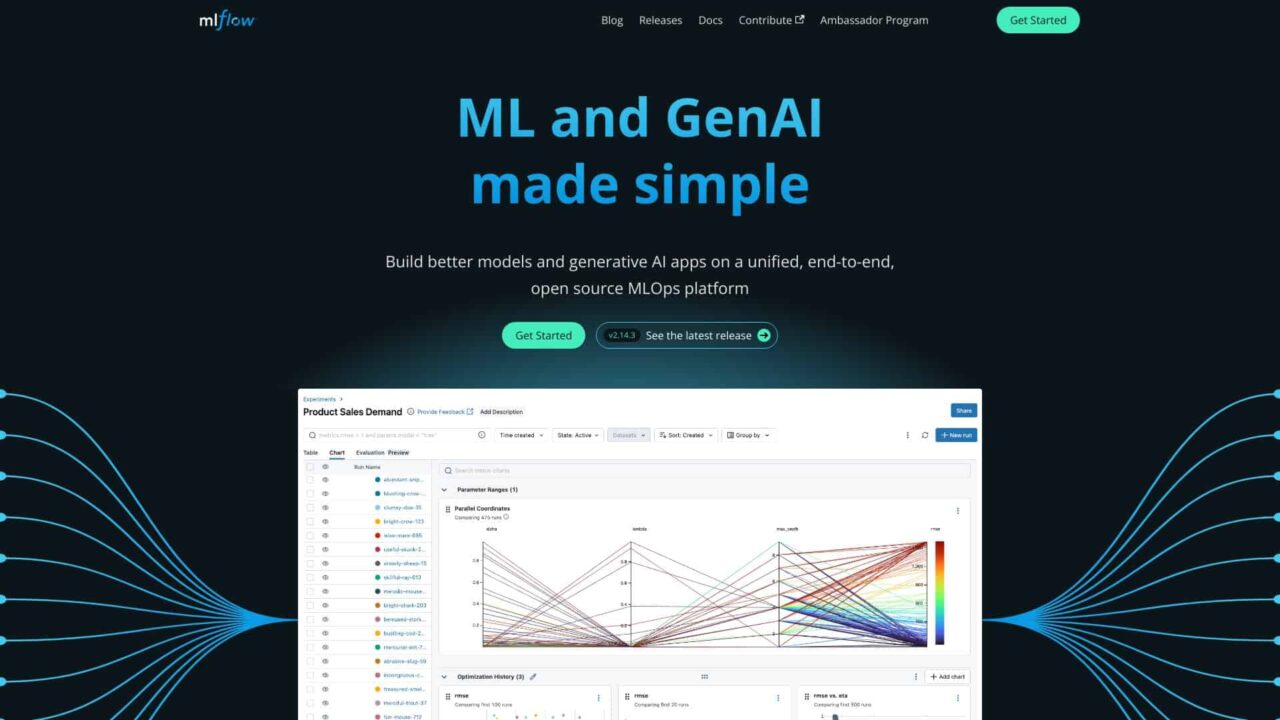MLflow is an open-source platform designed to streamline the machine learning (ML) lifecycle. It provides a unified interface for managing and tracking ML experiments, packaging and deploying models, and facilitating collaboration among data scientists and ML engineers. MLflow supports a wide range of ML frameworks and libraries, making it versatile and adaptable for various ML tasks. It consists of four main components: MLflow Tracking, MLflow Projects, MLflow Models, and MLflow Model Registry, each serving a specific purpose in the ML workflow.
Major Highlights
- Experiment Tracking and Reproducibility: MLflow Tracking records and queries experiments, capturing parameters, metrics, and artifacts for each run, ensuring reproducibility and easy comparison of different models[2][3].
- Model Packaging and Deployment: MLflow Models standardize the packaging of ML models, facilitating deployment across diverse environments without compatibility issues[2][3].
- Model Registry: Centralized repository for managing the lifecycle of ML models, including versioning, staging, and deployment, enhancing governance and control[2][3].
- Integration with ML Frameworks: Supports various ML frameworks and libraries, providing flexibility and ease of use for data scientists and ML engineers[1][3].
- Collaboration and Knowledge Sharing: Promotes collaboration by logging and sharing experiments, enabling team members to replicate successful runs and learn from each other’s work[2][3].
- Scalable and Secure: Managed MLflow on platforms like Databricks offers scalability, security, and advanced features for enterprise-grade ML operations[4].
- Automated Workflow Management: MLflow Projects and Pipelines automate multi-step ML workflows, from data preparation to model deployment, ensuring consistency and efficiency[2][3].
- Comprehensive Tutorials and Guides: Extensive documentation, how-to guides, and tutorials help users get started quickly and effectively with MLflow[1][7].
- Support for Generative AI: MLflow provides tools for building and deploying generative AI applications, including prompt engineering and evaluation of large language models (LLMs)[1].
- Visualization and Comparison Tools: The Tracking UI allows users to visualize, compare, and analyze experiment runs, aiding in better decision-making and model optimization[3][5].
Use Cases
- IoT Anomaly Detection: Managing and deploying models to detect anomalies in manufacturing equipment, preventing downtime and improving maintenance efficiency[6].
- Autonomous Vehicle Development: Ensuring reproducibility of perception and control algorithms, facilitating safe and reliable self-driving car technology[6].
- Personalized Learning Platforms: Tracking and optimizing recommendation algorithms to enhance student engagement and learning outcomes[6].
- Fraud Detection: Comparing and fine-tuning ML models for detecting fraudulent transactions, improving accuracy and reducing false positives[6].
- Social Media Content Moderation: Managing the lifecycle of content moderation models, ensuring effective and scalable moderation strategies[6].
- Drug Discovery and Research: Streamlining workflows for analyzing molecular datasets, aiding in the discovery of new drugs and treatments[6].
MLflow stands out as a powerful and versatile tool for managing the ML lifecycle, enhancing productivity, collaboration, and model deployment efficiency.


Leave a Reply